Beekeeping in the Philippines is a blossoming sector, showcasing the rich biodiversity and unique agricultural practices of the country. This introductory look delves into the vibrant world of Filipino apiculture, revealing how it contributes to both local communities and the environment. We’ll explore the challenges and triumphs faced by beekeepers, the variety of honey produced, and the crucial role bees play in sustaining Philippine agriculture.
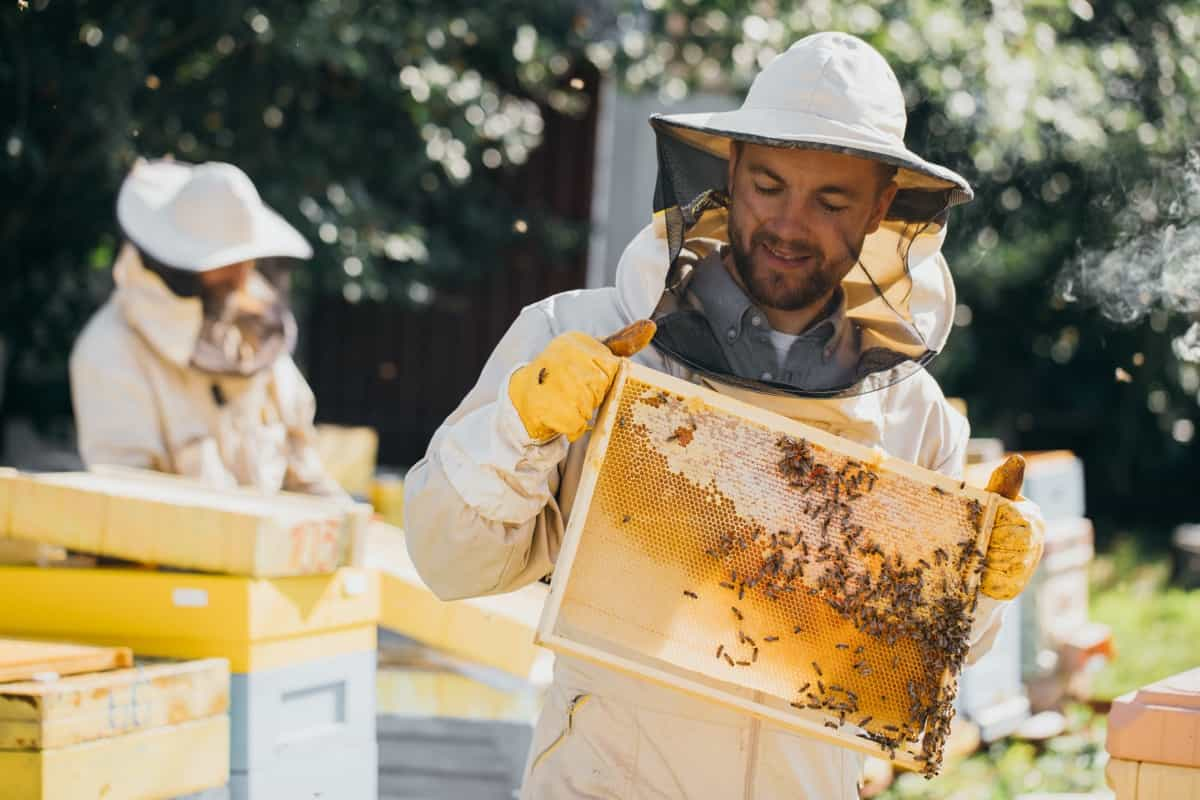
Introduction to Beekeeping and Apiculture in the Philippines
Beekeeping is the practice of managing honeybees and harvesting their products, such as honey, beeswax, pollen, propolis, and royal jelly. Apiculture is the scientific study of honeybees and their behavior, ecology, and physiology. Beekeeping and apiculture are important for food security, income generation, environmental conservation, and biodiversity protection in the Philippines.
History of Beekeeping in the Philippines
Beekeeping in the Philippines dates back to pre-colonial times when indigenous people collected honey from wild bees using bamboo tubes or clay pots. The Spanish colonizers introduced the European honeybee (Apis mellifera) in the 17th century, but it did not thrive well in the tropical climate. The Asian honeybee (Apis cerana) or Ligwan was more adapted to the local conditions and became the dominant bee species for beekeeping.
In the 1970s, the government and some private organizations promoted beekeeping as a livelihood option for rural communities. In the 1980s, the Africanized honeybee (Apis mellifera scutellata) or Killer bee invaded the country and posed a threat to both beekeepers and native bees. In the 1990s, beekeeping expanded to include other bee species, such as stingless bees (Trigona spp.) or Lukot, giant honeybees (Apis dorsata) or Pukyutan, and dwarf honeybees (Apis florea) or Putyukan.
The Role of Bees in Agriculture and the Environment
Bees play major role in agriculture and the environment by pollinating crops and wild plants. Pollination is the transfer of pollen from the male part flower to the female part of another flower, resulting in fertilization and seed production. Bees are among the most efficient pollinators because they visit many flowers in search of nectar and pollen, which they use as food.
In case you missed it: Sorghum Farming in the Philippines: A Step-by-Step Production Guide
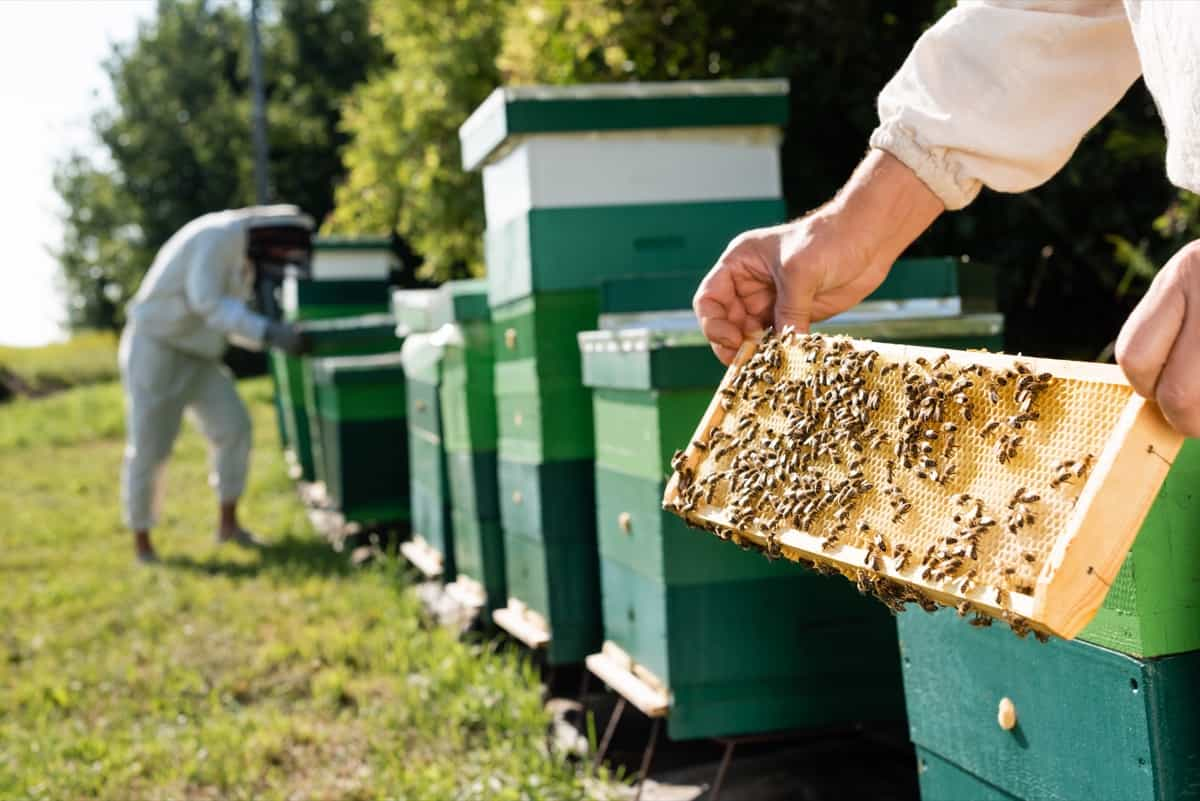
By pollinating crops, bees increase their yield and quality, as well as their resistance to pests and diseases. Some crops that depend on bee pollination are coconut, mango, coffee, cacao, citrus, avocado, squash, cucumber, eggplant, tomato, watermelon, and many others. By pollinating wild plants, bees maintain the diversity and balance of ecosystems, as well as provide food and habitat for other animals.
Economic Importance
Beekeeping is an economically important activity in the Philippines because it provides income and employment opportunities to many Filipinos, especially in rural areas. Beekeeping is a low-cost and low-maintenance enterprise that can be integrated with other agricultural activities. Bee products have high market value and demand, both locally and internationally. Honey is the most common bee product, which can be used as food, medicine, or ingredient for various products.
Beeswax is used for making candles, cosmetics, polish, crayons, and other products. Pollen is a source of vitamins, minerals, protein, and antioxidants that can be consumed as a supplement or added to other foods. Propolis is substance that bees collect from plants and use to seal their hives. It has antibacterial, antifungal, anti-inflammatory, and antioxidant properties that can be used for treating wounds, infections, ulcers, burns, and other conditions. Royal jelly is a milky secretion that bees produce to feed their queen and young larvae.
Beekeeping Practices and Techniques in the Philippines
Beekeeping is a growing agricultural activity in the Philippines that can provide sustainable income to farmers. The Philippine National Standard for Code of Good Beekeeping Practices outlines the practices and techniques for beekeeping. The first step is choosing the appropriate species of bees, which include four indigenous species: Apis dorsata, Apis cerana, Apis breviligula, and Apis andreniformis.
The most commonly kept species are Apis mellifera and Apis cerana, with Apis mellifera being preferred due to its high productivity but requiring more input and being susceptible to pests and diseases. Apis cerana, native to the Philippines, is easier to manage and more resistant to pests but produces less honey. A suitable site for apiary or meliponiary should have adequate sources of nectar and pollen, clean water, shade, ventilation, and protection from predators and natural hazards.
The site should also comply with local regulations and laws. The next step is preparing the hives or colonies, which depend on the species of bees. The most common type is the Langstroth hive for Apis mellifera, the top-bar hive for Apis cerana, and a wooden box for stingless bees.
In case you missed it: How to Start Organic Farming in the Philippines: Schemes, Certification, Profits, Cost, and Challenges
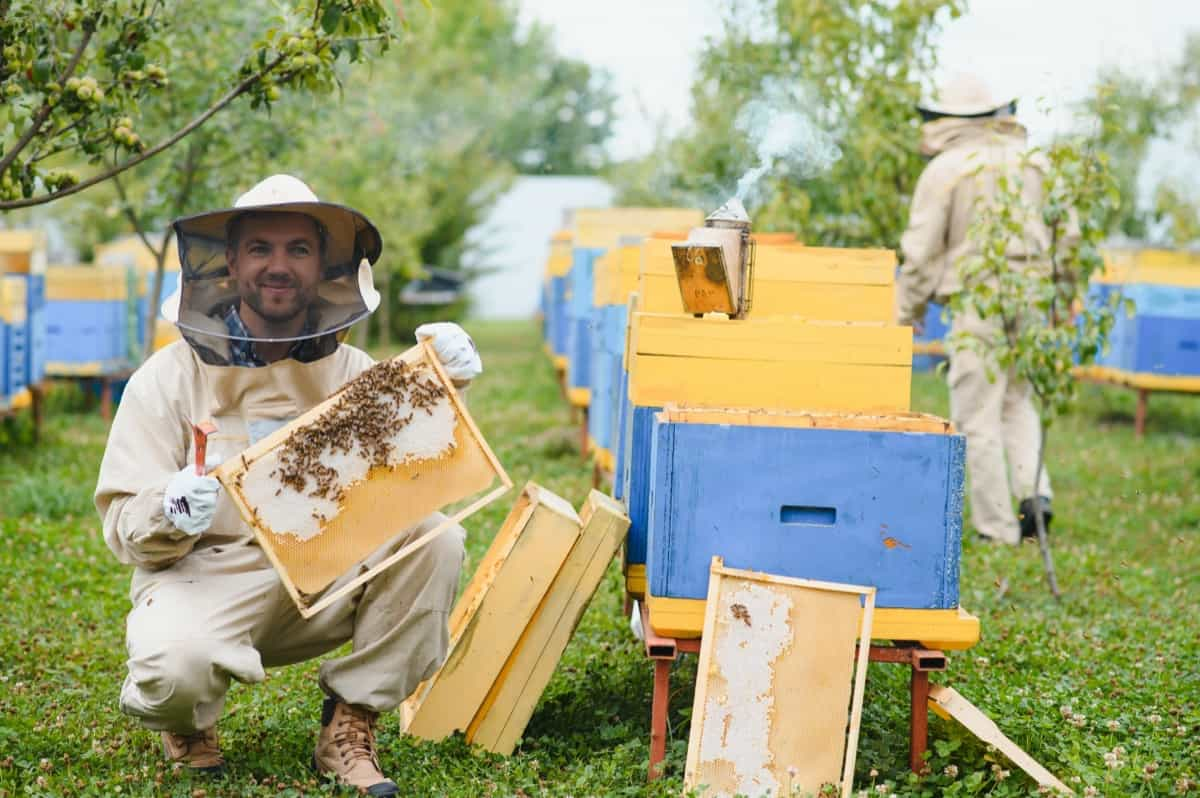
Beekeeping in the Philippines can provide various benefits to farmers and consumers, including enhancing food security by producing nutritious and medicinal products, providing income-generating opportunities through selling or processing these products, and promoting environmental conservation by pollinating essential crops and plants.
Types of Bee Hives and Equipment Used in the Philippines
The Langstroth hive is the most common type of hive used in the Philippines for European honey bees, which are not native to the country but are preferred for their high productivity. It consists of movable frames that can be easily inspected and harvested but require significant investment in terms of costs, knowledge, and protection from predators, diseases, and pests.
The top-bar hive is a simple type for Asian honey bees, native to the Philippines and more adapted to the tropical climate. It consists of wooden bars placed horizontally on a box or trough, with bees building their combs hanging from them. It is cheaper, easier to make, and maintain, but it produces less honey and requires more frequent harvesting.
The log hive is a traditional type for giant honey bees, native to the Philippines, and is made of a hollowed-out log. It is cheap and simple to make, but it is difficult to inspect and harvest and exposes bees to predators and pests. Beekeeping equipment in the Philippines includes a bee suit, a bee smoker, a hive tool, and a honey extractor. Each type of hive has its advantages and disadvantages, and the equipment used depends on the specific needs of the beekeeper.
Bee Species Found in the Philippines
In the Philippines, beekeeping primarily revolves around the Apis Mellifera, a non-native species chosen for its high productivity despite being challenging to manage. These bees, larger and living in bigger colonies compared to the native Asian honeybee (Apis Cerana), require considerable knowledge and resources.
While beekeeping with European honeybees is still emerging in the Philippines, efforts are being made to increase its popularity through training provided by various organizations. However, challenges like pests, diseases, and the need for efficient queen bee production make beekeeping a demanding venture despite the promising potential for honey and other bee products.
Beekeeping Organizations and Associations in the Philippines
The International Federation of Beekeepers’ Association (Apimondia) represents the interests of beekeepers and scientists, organizing international congresses and publications. The Philippines hosted the 46th Apimondia Congress in 2019. Beenet Philippines provides technical assistance, training, and advocacy for beekeepers, while BAPI serves as a platform for exchanging information and best practices.
In case you missed it: How to Start a Crab Farming in the Philippines: Business Plan, Types of Crabs, Indoor and Cage Culture
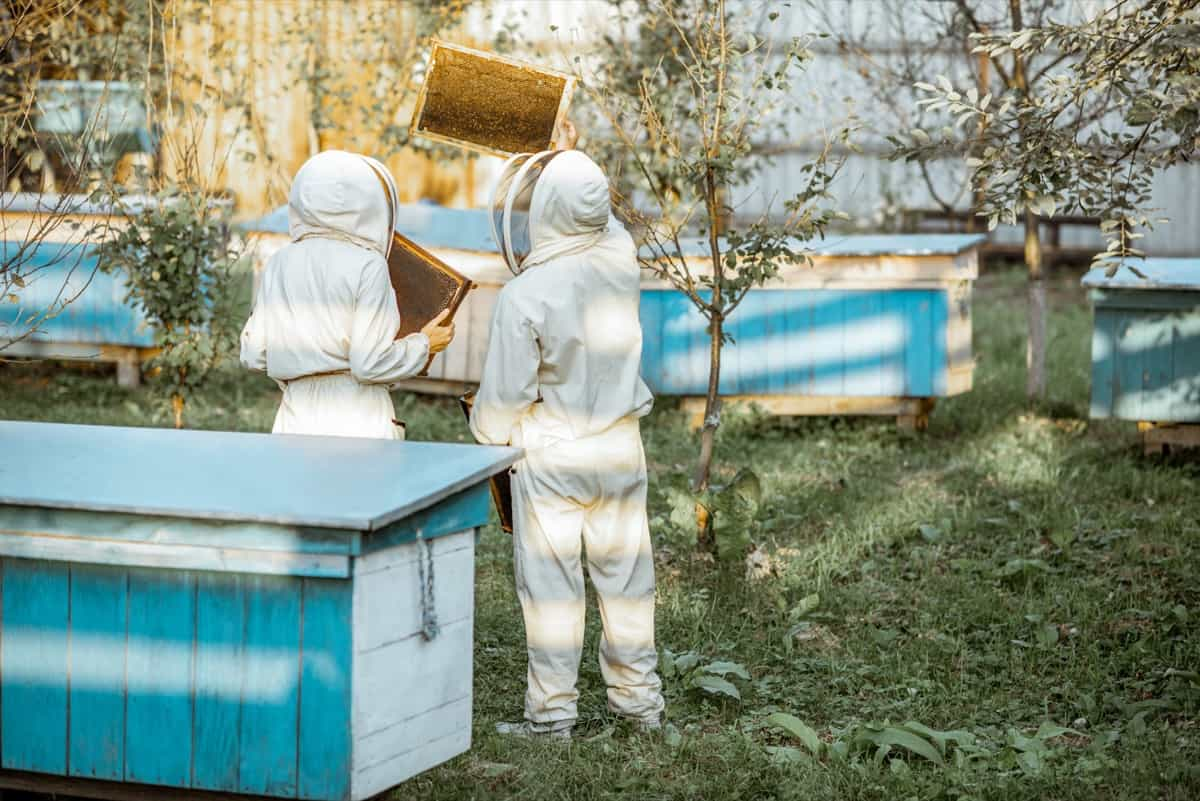
The National Apiculture Research, Training, and Development Institute conducts research, training, extension, and development programs on apiculture and maintains a national gene bank of honeybees and other pollinators.
Beekeeping Education and Training Programs in the Philippines
Beekeeping education and training programs are crucial for beekeepers to manage their apiaries effectively and efficiently. Institutions offering these programs include the Department of Agriculture – Bureau of Agricultural Research (DABAR), Bureau of Animal Industry (BAI), Don Mariano Marcos Memorial State University (DMMMSU), University of the Philippines Los Baños (UPLB), and Benguet State University (BSU). DABAR provides research-based information, technologies, and policies for the development of the agriculture sector, while BAI regulates animal health and welfare, animal production, and products.
Beekeeping Regulations and Laws in the Philippines
Beekeeping regulations and laws are crucial for ensuring the quality, safety, and traceability of bee products, as well as protecting beekeepers and consumers. In the Philippines, the Philippine National Standard (PNS) for the Code of Good Beekeeping Practices sets general principles and minimum requirements for commercial or backyard apiaries, meliponiaries, and wild honey hunting. These standards cover honey, beeswax, pollen, and propolis and apply to all species of bees.
Food Safety Act of 2013, strengthens the food safety regulatory system to protect consumer health, facilitate market access for local foods and food products. The Organic Agriculture Act of 2010, promotes and supports organic agriculture to enhance its competitiveness in local and international markets. Additionally, Republic Act No. 9147, or the Wildlife Resources Conservation and Protection Act of 2001, provides for the conservation, protection of wildlife resources and their habitats. These regulations and laws are essential for the safety and sustainability of beekeeping in the Philippines.
Beekeeping Challenges and Opportunities in the Philippines
Beekeeping in the Philippines faces various challenges and opportunities due to climate change, pests and diseases, predators, pollution, deforestation, urbanization, market demand, consumer awareness, government support, and research and development. Climate change mainly affects the availability and quality of floral sources, bee behavior, and the production and quality of bee products. Adopting climate-smart beekeeping practices, addressing common pests and diseases, and implementing biosecurity measures can help mitigate these issues.
Predators pose a threat to bee colonies, with common predators including ants, wasps, hornets, birds, lizards, rats, mice, bears, monkeys, and humans. Protective devices like hive stands, screens, traps, fences, nets, alarms, and guards can help protect bee colonies. Pollution affects the quality of bee products, with sources such as pesticides, herbicides, fungicides, fertilizers, heavy metals, industrial wastes, and radioactive materials. Organic beekeeping or using organic or natural inputs can help improve the quality of bee products.
Deforestation reduces the availability of floral sources and habitats for bees, with causes such as logging, mining, agriculture, infrastructure, and urbanization. Promoting reforestation or afforestation using bee-friendly plants can help. Urbanization limits space and resources for beekeeping, with effects like noise, heat, smog, traffic, and vandalism. Urban beekeeping or rooftop beekeeping using suitable bee species can help address these challenges.
In case you missed it: How to Start Banana Farming in the Philippines: Business Plan, Varieties, Requirements, and Profit
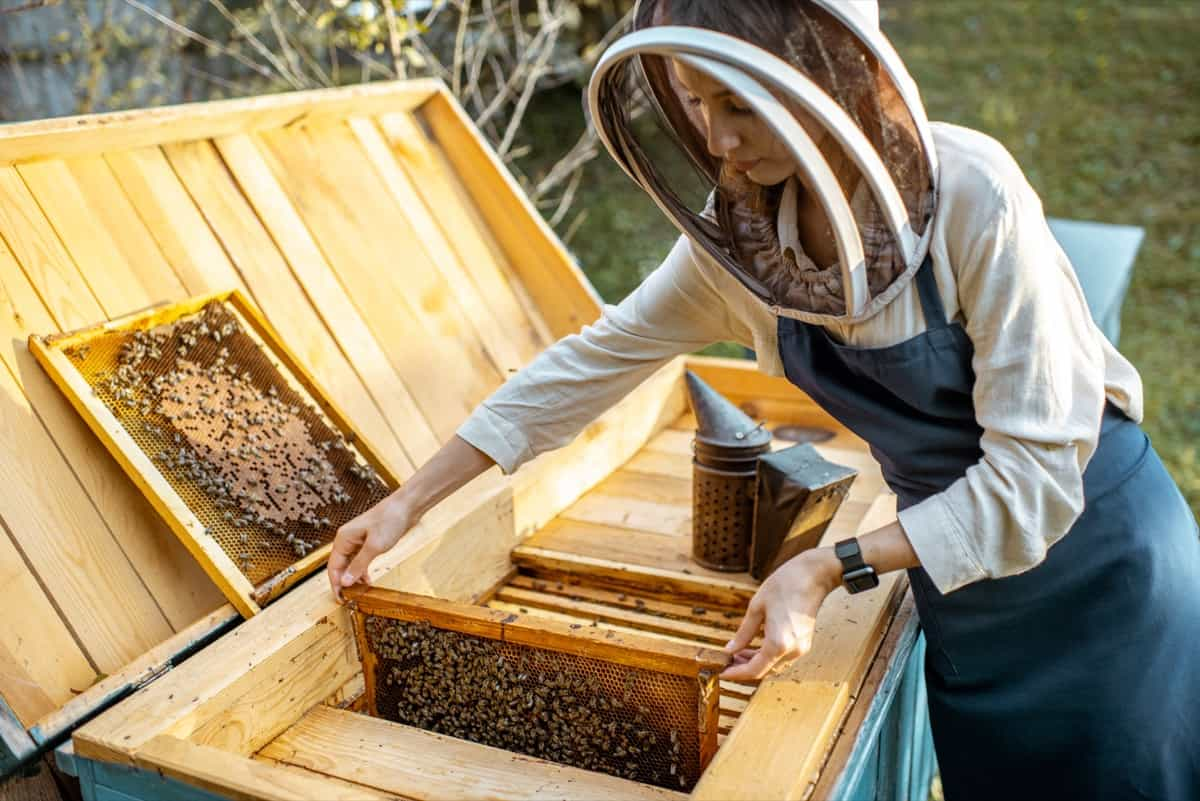
Market demand requires meeting local and international buyers’ standards and preferences, with factors such as price, quality, quantity, variety, packaging, labeling, certification, and traceability affecting demand. Modern technologies can improve production efficiency and product quality. Consumer awareness requires educating consumers about bee products and overcoming misconceptions about honey adulteration, allergic reactions, medicinal claims, and religious beliefs. Information dissemination campaigns can help disseminate information.
Beekeeping Products and Market in the Philippines
Beekeeping is a profitable and sustainable agribusiness in the Philippines that can provide various products such as honey, beeswax, propolis, pollen, and royal jelly. Beekeeping also supports ecotourism and biodiversity conservation by promoting pollination and environmental awareness. Beekeeping products have various applications in food, cosmetics, health, and other industries. Honey is the most popular product, valued for its sweetness, flavor, and medicinal properties.
The Philippines bee products market was valued at $24 million in 2018 and is projected to reach $42 million by 2028, registering a compound annual growth rate of 8.3%. Other products include beeswax, which is used for candles, cosmetics, and furniture polish; propolis, which is a resinous substance with antibacterial and antifungal properties; pollen, rich source of protein, vitamins, and minerals; and royal jelly, which is a secretion that stimulates the development of queen bees and has various health benefits for humans.
Beekeeping Tourism and Ecotourism in the Philippines
Beekeeping tourism or agritourism is a form of ecotourism that involves visiting apiaries or legionaries (stingless bee farms) to learn about beekeeping, observe bee behavior, taste honey and other products, and experience the natural environment.
Apitourism can provide additional income to beekeepers, as well as educate visitors about the importance of bees and their conservation. Some examples of apitourism sites in the Philippines are Milea Bee Farm in Batangas, BEEngo Farm in Laguna, Nature’s Hive Apiaries in Cebu, and HoneyHealth Farms in Bukidnon.
Outlook and Sustainability
The future outlook and sustainability of beekeeping in the Philippines depend on several factors, such as government support, research and development, market demand, consumer awareness, environmental protection, and beekeeper education. The Department of Agriculture – Bureau of Agricultural Research has been providing training, research, extension, and policy support to beekeepers since 1990.
In case you missed it: Poultry Farming in the Philippines: How to Start, Breeds, Subsidy, Loans, and Profits
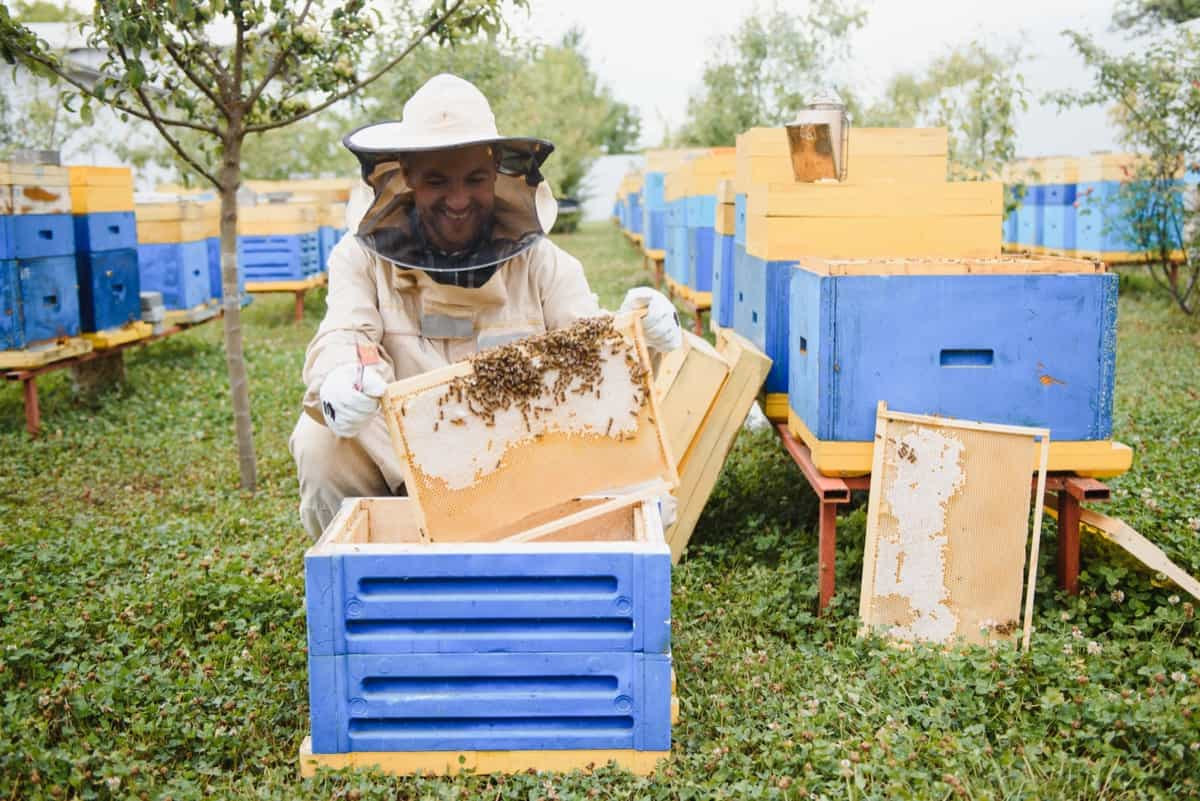
The National Ecotourism Strategy (NES) of 2013 also recognizes the potential of agritourism as a tool for biodiversity conservation and community development. However, there are still gaps and challenges that need to be addressed, such as improving product quality and standards, enhancing pest and disease management, increasing access to resources and markets, promoting best practices and innovations, strengthening collaboration among stakeholders, and raising public awareness on the value of bees and bee products.
Conclusion
The apiculture industry in the Philippines, centered on the productive yet challenging Apis Mellifera, is a burgeoning field with vast potential. Despite obstacles like pests and the need for specialized knowledge, dedicated training, and growing interest are paving the way for a promising future in Filipino beekeeping.
- Types of Pesticides Used in Agriculture: A Beginner’s Guide
- Economical Aquaculture: A Guide to Low-Budget Fish Farming
- 15 Common Planting Errors That Can Doom Your Fruit Trees
- How to Make Houseplants Bushy: Effective Tips and Ideas
- Innovative Strategies for Boosting Coconut Pollination and Yield
- Pollination Strategies for Maximum Pumpkin Yield
- The Complete Guide to Chicken Fattening: Strategies for Maximum Growth
- Natural Solutions for Tulip Problems: 100% Effective Remedies for Leaf and Bulb-Related Issues
- Revolutionizing Citrus Preservation: Towards a Healthier, Greener Future
- Natural Solutions for Peony Leaf and Flower Problems: 100% Effective Remedies
- Maximizing Profits with Avocado Contract Farming in India: A Comprehensive Guide
- Natural Solutions for Hydrangea Problems: 100% Effective Remedies for Leaf and Flowers
- The Ultimate Guide to Choosing the Perfect Foliage Friend: Bringing Life Indoors
- From Sunlight to Sustainability: 15 Ways to Use Solar Technology in Agriculture
- The Ultimate Guide to Dong Tao Chicken: Exploring from History to Raising
- The Eco-Friendly Makeover: How to Convert Your Unused Swimming Pool into a Fish Pond
- Mastering the Art of Delaware Chicken Farming: Essentials for Healthy Backyard Flocks
- 20 Best Homemade Fertilizers for Money Plant: DIY Recipes and Application Methods
- How to Craft a Comprehensive Free-Range Chicken Farming Business Plan
- Brighten Your Flock: Raising Easter Egger Chickens for Beauty and Bounty
- How to Optimize Your Poultry Egg Farm Business Plan with These Strategies
- Subsidy for Spirulina Cultivation: How Indian Government Schemes Encouraging Spirulina Farmers
- Ultimate Guide to Raising Dominique Chickens: Breeding, Feeding, Egg-Production, and Care
- Mastering the Art of Raising Jersey Giant Chickens: Care, Feeding, and More
- Ultimate Guide to Raising Legbar Chickens: Breeding, Farming Practices, Diet, Egg-Production
- How to Raise Welsummer Chickens: A Comprehensive Guide for Beginners
- How to Protect Indoor Plants in Winter: A Comprehensive Guide
- Ultimate Guide to Grow Bag Gardening: Tips, Tricks, and Planting Ideas for Urban Gardeners
- Guide to Lotus Cultivation: How to Propagate, Plant, Grow, Care, Cost, and Profit
- Agriculture Drone Subsidy Scheme: Government Kisan Subsidy, License, and How to Apply Online
- Ultimate Guide to Raising Araucana Chickens: Breed Profile, Farming Economics, Diet, and Care
- Bringing Hydroponics to Classroom: Importance, Benefits of Learning for School Students
- Ultimate Guide to Raising Polish Chickens: Breed Profile, Farming Economics, Diet, and Care
- Ultimate Guide to Raising Australorp Chickens: Profile, Farming Economics, Egg Production, Diet, and Care
- Silkie Chicken Farming: Raising Practices, Varieties, Egg Production, Diet, and Care
- Sussex Chicken Farming: Raising Practices, Varieties, Egg Production, Diet and Care